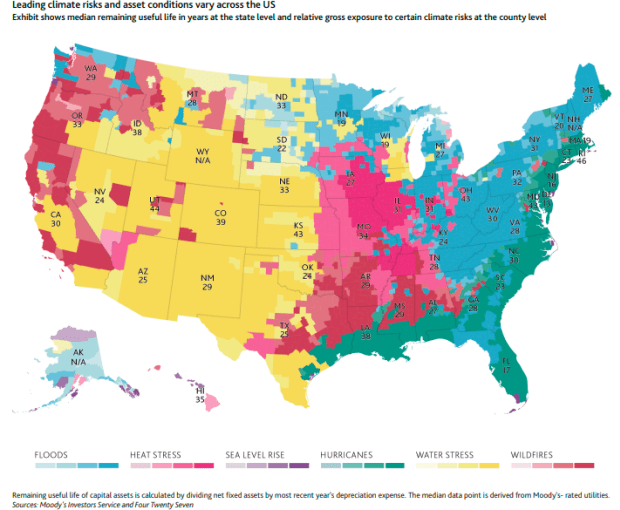Climate change and increasingly severe weather events will take a toll on aging public utilities, especially water and sewer systems, leading to higher costs, higher debt loads, and rising rates for customers, according to recent research.
Events like droughts, wildfires, and storms will continue to challenge utilities, wrote analysts at Moody’s Investors Service in a May 7 report. “Worsening climate events and trends may also weaken a service area’s economy, making it harder for commercial customers and residential ratepayers to afford the higher rates needed to rehabilitate aging infrastructure and protect public health,” they added.
That’s even as America’s infrastructure continues to deteriorate, Moody’s noted. In 2003, the median remaining useful life of water and sewer assets was 34 years. In 2020, that figure had fallen 21% to 27 years, an indication that utility systems are depreciating faster than they are receiving needed investment.
Related: Public pensions won’t earn as much from investments in the future. Here’s why that matters
The EPA reckons water and sewer systems will need $ 743 billion of upgrades through 2035, and Moody’s notes that existing federal programs, including seeding state revolving funds and Community Development Block Grants, won’t be enough. Even the White House’s American Jobs Plan, which specifically calls out “crumbling” water systems, would only spend $ 111 billion, as proposed.
“Without a marked increase in the availability of federal resources, local water and sewer utilities will be left to fund approximately $ 490 to $ 680 billion of needed infrastructure improvements,” the Moody’s report notes.
The types of improvements needed will depend on the climate changes expected, which are mapped in the graphic below. Still, it’s worth noting that climate change can bring weather that’s not just extreme, but also unexpected, like the winter storms that paralyzed parts of Texas this year.

As might be expected, water and sewer utilities with older infrastructure, poorer ratepayer populations, and limited financial flexibility will have it hardest in “striking an efficient balance between managing sharp increases in rates and debt while trying to control the maintenance and operating expenses of increasingly inefficient infrastructure,” the analysts wrote.
Moody’s notes Miami-Dade County’s water and sewer system as one that’s highly exposed to hurricanes and heat, and already grappling with dated infrastructure. But offsetting that is its large customer base and a history of raising rates consistently while still keeping them among the lowest in the Southeast.
Across the country, however, the rate increases needed to fund needed upgrades may pinch household budgets, perhaps sooner than expected, as the COVID-19 pandemic shut down capital projects for much of 2020.
